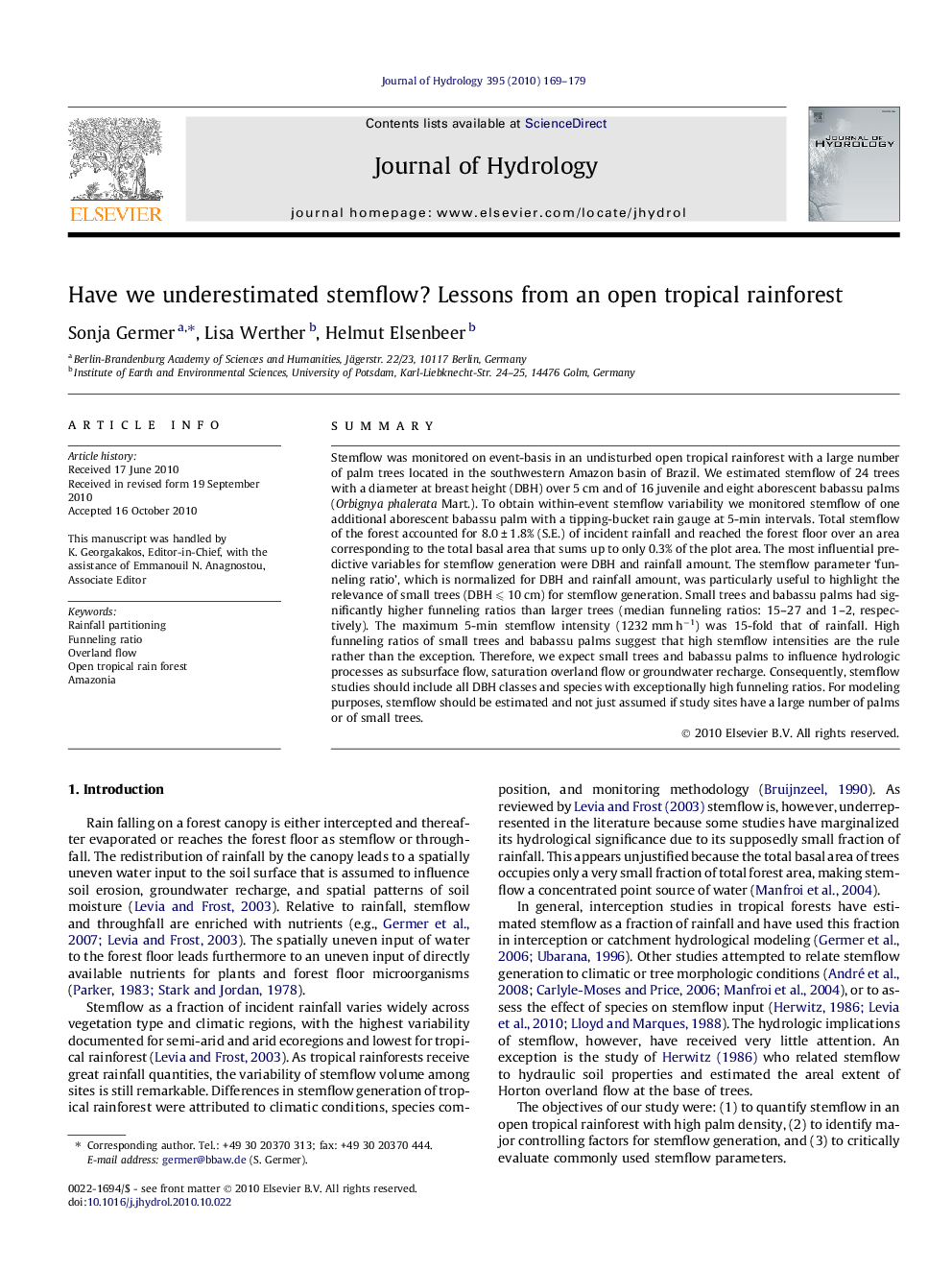| Article ID | Journal | Published Year | Pages | File Type |
|---|---|---|---|---|
| 4578014 | Journal of Hydrology | 2010 | 11 Pages |
SummaryStemflow was monitored on event-basis in an undisturbed open tropical rainforest with a large number of palm trees located in the southwestern Amazon basin of Brazil. We estimated stemflow of 24 trees with a diameter at breast height (DBH) over 5 cm and of 16 juvenile and eight aborescent babassu palms (Orbignya phalerata Mart.). To obtain within-event stemflow variability we monitored stemflow of one additional aborescent babassu palm with a tipping-bucket rain gauge at 5-min intervals. Total stemflow of the forest accounted for 8.0 ± 1.8% (S.E.) of incident rainfall and reached the forest floor over an area corresponding to the total basal area that sums up to only 0.3% of the plot area. The most influential predictive variables for stemflow generation were DBH and rainfall amount. The stemflow parameter ‘funneling ratio’, which is normalized for DBH and rainfall amount, was particularly useful to highlight the relevance of small trees (DBH ⩽ 10 cm) for stemflow generation. Small trees and babassu palms had significantly higher funneling ratios than larger trees (median funneling ratios: 15–27 and 1–2, respectively). The maximum 5-min stemflow intensity (1232 mm h−1) was 15-fold that of rainfall. High funneling ratios of small trees and babassu palms suggest that high stemflow intensities are the rule rather than the exception. Therefore, we expect small trees and babassu palms to influence hydrologic processes as subsurface flow, saturation overland flow or groundwater recharge. Consequently, stemflow studies should include all DBH classes and species with exceptionally high funneling ratios. For modeling purposes, stemflow should be estimated and not just assumed if study sites have a large number of palms or of small trees.
